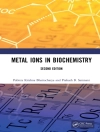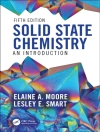The first handbook on this emerging field provides a comprehensive overview of transition metal-catalyzed coupling reactions in the presence of an oxidant. Following an introduction to the general concept and mechanism of this reaction class, the team of authors presents chapters on C-C cross-coupling reactions using organometallic partners, C-Heteroatom bond forming reactions via oxidative couplings, and C-H couplings via C-H activation. The text also covers such groundbreaking topics as recent achievements in the fields of C-C and C-X bond formation reactions as well as C-H activation involving oxidative couplings.
With its novel and concise approach towards important building blocks in organic chemistry and its focus on synthetic applications, this handbook is of great interest to all synthetic chemists in academia and industry alike.
Inhaltsverzeichnis
1 Oxidative Coupling – Bonding between Two Nucleophiles 1
1.1 Introduction/General 1
1.1.1 What is Oxidative Cross-Coupling? 1
1.1.2 Why Oxidative Cross-Coupling? 1
1.1.3 How Does Oxidative Cross-Coupling Work? 3
1.1.4 Development and Outlook 4
References 4
2 Organometals as Nucleophiles 7
2.1 Classification and Applications of Organometallic Reagents 7
2.2 Csp–M and Csp–M as Nucleophiles 8
2.2.1 Alkyne–Alkyne Oxidative Coupling 9
2.2.1.1 Alkynyl-Si 11
2.2.1.2 Alkynyl-Sn 12
2.2.1.3 Alkynyl-B 14
2.2.1.4 Alkynyl-Mg 17
2.2.1.5 Alkynyl-Te 19
2.2.2 Alkyne–Cyano Oxidative Coupling 22
2.3 Csp–M and Csp2–M as Nucleophiles 22
2.4 Csp–M and Csp3–M as Nucleophiles 28
2.5 Csp2–M and Csp2–M as Nucleophiles 30
2.5.1 Homocoupling of Csp2–M 30
2.5.2 Cross-Coupling between Different Species of Csp2–M 32
2.6 Csp2–M and Csp3–M as Nucleophiles 34
2.7 Csp3–M and Csp3–M as Nucleophiles 37
2.8 Conclusions 40
Acknowledgments 41
References 42
3 Oxidative Couplings Involving the Cleavage of C–H Bonds 45
3.1 Theoretical Understandings and Methods in C–H Bond Functionalization 45
3.1.1 Introduction 45
3.1.2 Mechanisms of C–H Cleavage by Transition Metals 47
3.1.2.1 Oxidative Addition 49
3.1.2.2 Electrophilic Substitution 49
3.1.2.3 σ-Bond Metathesis 52
3.1.2.4 Concerted Metalation Deprotonation (CMD) 52
3.1.2.5 1, 2-Addition 55
3.1.2.6 Biomimetic C–H Oxidation 55
3.1.2.7 Carbenoid/Nitrenoid C–H Insertion 56
3.1.3 Methods for Selective C–H Bond Functionalization 58
3.1.3.1 Directed C–H Functionalization 58
3.1.3.2 Sterically Controlled C–H Functionalization 63
3.1.3.3 C–H Functionalization via Ionic Intermediates 63
3.1.3.4 C–H Functionalization via Radical Intermediates 67
3.2 Oxidative Couplings between Organometals and Hydrocarbons 71
3.2.1 C(sp)–H and Organometals as Nucleophiles 71
3.2.2 Csp2–H and Organometals as Nucleophiles 73
3.2.3 Csp3–H and Organometals as Nucleophiles 93
3.3 Oxidative Couplings between Two Hydrocarbons 95
3.3.1 C(sp)–H and C(sp)–H as Nucleophiles 95
3.3.2 C(sp)–H and C(sp2)–H as Nucleophiles 99
3.3.3 C(sp)–H and C(sp3)–H as Nucleophiles 105
3.3.4 Csp2–H and Csp2–H as Nucleophiles 106
3.3.4.1 Oxidative Coupling between Directing-Group-Containing Arenes and Unactivated Arenes 107
3.3.4.2 Oxidative Coupling of Arenes without Directing Groups 109
3.3.4.3 Intramolecular Oxidative Coupling of Unactivated Arenes 110
3.3.4.4 Oxidative Heck-Type Cross-Coupling 114
3.3.5 Csp2–H and Csp3–H as Nucleophiles 123
3.3.5.1 Intramolecular Oxidative Coupling between Aromatic Csp2–H and Csp3–H 123
3.3.5.2 Intramolecular Oxidative Coupling between Alkene Csp2–H and Csp3–H 125
3.3.5.3 Intermolecular Oxidative Coupling between Csp2–H and Csp3–H 127
3.3.6 C(sp3)–H and C(sp3)–H as Nucleophiles 128
3.4 Conclusions 130
References 130
4 Bonding Including Heteroatoms via Oxidative Coupling 139
4.1 Introduction 139
4.2 Oxidative C–O Bond Formation 140
4.2.1 C–H and O–M as Nucleophiles 140
4.2.2 C–H and O–H as Nucleophiles 140
4.2.2.1 C(sp2, Aryl)–O Bond Formation 140
4.2.2.2 C(sp2, Heteroaryl, Alkenyl)–O Bond Formation 144
4.2.2.3 C(sp3, Benzyl)–O Bond Formation 145
4.2.2.4 C(sp3, Alkanes with Directing Group)–O Bond Formation 145
4.2.2.5 C(sp3, Ethers, Amines, Amides, Alkanes)–O Bond Formation 148
4.2.2.6 C(sp3, allyl)–O Bond Formation 148
4.3 Oxidative C–N Bond Formation 152
4.3.1 C(sp)–N Bond Formation 152
4.3.2 C(sp2, Arenes with Directing Group)–N Bond Formation 153
4.3.3 C(sp2, Simple Arenes)–N Bond Formation 156
4.3.4 C(sp2, Heteroaryl)–N Bond Formation 156
4.3.5 C(sp2, Alkenyl)–N Bond Formation 159
4.3.6 C(sp3, Alkyl)–N Bond Formation 163
4.3.7 C(sp3, Allyl)–N Bond Formation 164
4.4 Oxidative C–Halo Bond Formation 166
4.4.1 C–H and Halo–H as Nucleophiles 167
4.4.2 C–H and Halo–M as Nucleophiles 168
4.5 Oxidative C–S Bond Formation 170
4.5.1 C(sp2)–S Bond Formation 170
4.5.2 C(sp)–S Bond Formation 171
4.6 Oxidative C–P Bond Formation 172
4.6.1 C(sp2, Aryl)–P Bond Formation 172
4.6.2 C(sp2, Heteroaryl)–P Bond Formation 173
4.6.3 C(sp2, Alkenyl)–P Bond Formation 176
4.6.4 C(sp)–P Bond Formation 176
4.6.5 C(sp3)–P Bond Formation 176
4.7 Oxidative C–B Bond Formation 177
References 178
5 Oxidative Radical Couplings 185
5.1 Introduction 185
5.2 Oxidative Radical C–C Couplings 185
5.2.1 Coupling of Csp3–H with Csp–H Bonds 185
5.2.2 Coupling of Csp3–H with Csp2–H Bonds 187
5.2.3 Coupling of Csp3–H with Csp3–H Bonds 200
5.2.4 Coupling of Csp2–H with Csp2–H Bonds 204
5.3 Oxidative Radical C–C Couplings through Cascade Process 208
5.4 Oxidative Radical C–C Couplings via C–C(N) Bond Cleavage 217
References 222
Index 225
Über den Autor
Aiwen Lei is a professor of organic chemistry at the College of Chemistry and Molecular Sciences and the executive director of the Institute of Green Catalysis at Wuhan University, China. After obtaining his Ph D in 2000 under the supervision of Prof. Xiyan Lu, he went to Pennsylvania State University and then to Stanford University for post-doctoral research. In 2005 he was appointed professor at Wuhan University. Aiwen Lei has received the Chinese Chemistry Society – John Wiley Young Chemist Award (2008), the National Science Fund for Distinguished Young Scholars in China (2010) and the Eli Lilly Scientific Excellence Award in Chemistry in 2011.
Wei Shi is an associate professor at the Huazhong Agricultural University (Wuhan, China) since 2011. He obtained his Ph D at Wuhan University under the supervision of Prof. Aiwen Lei. His research interest is focused on the chemistry of alkynes and their derivatives.
Chao Liu is a professor at Lanzhou Institute of Chemical Physics, Chinese Academy of Science, China. He received his Ph D in 2012 from the Wuhan University, China, under the supervision of Prof. Aiwen Lei. From October 2008 to October 2009 he was an exchange Ph D student at Durham University, UK, in the group of Prof. Todd B. Marder. His research is focused on oxo-synthesis and selective oxidation.
Wei Liu is an associate professor at the College of Food Science and Technology, Henan University of Technology (Zhengzhou, China). He obtained his Ph D from the College of Chemistry and Molecular Sciences, Wuhan University, China, in the group of Prof. Aiwen Lei in 2010. His research interest focuses on the green organic synthesis and catalytical biomass transformation.
Hua Zhang is a professor at Nanchang University, China. He obtained his Ph D degree under the supervision of Prof. Aiwen Lei at Wuhan University in 2013. After that, he spent two years as a JSPS postdoctoral researcher in Prof. Kenichiro Itami’s lab at Nagoya University, Japan. His current research is focusing on non-noble transition metal catalysis.
Chuan He is a Marie Curie Research Fellow at the Department of Chemistry, University of Cambridge, UK. He obtained his Ph D from Wuhan University, Chain, under supervision of Prof. Aiwen Lei in 2013. He then joined Prof. Matthew Gaunt’s group as a postdoctoral researcher at the University of Cambridge, UK. His current research focuses on transition-metal-catalyzed C-H bond functionalization.












